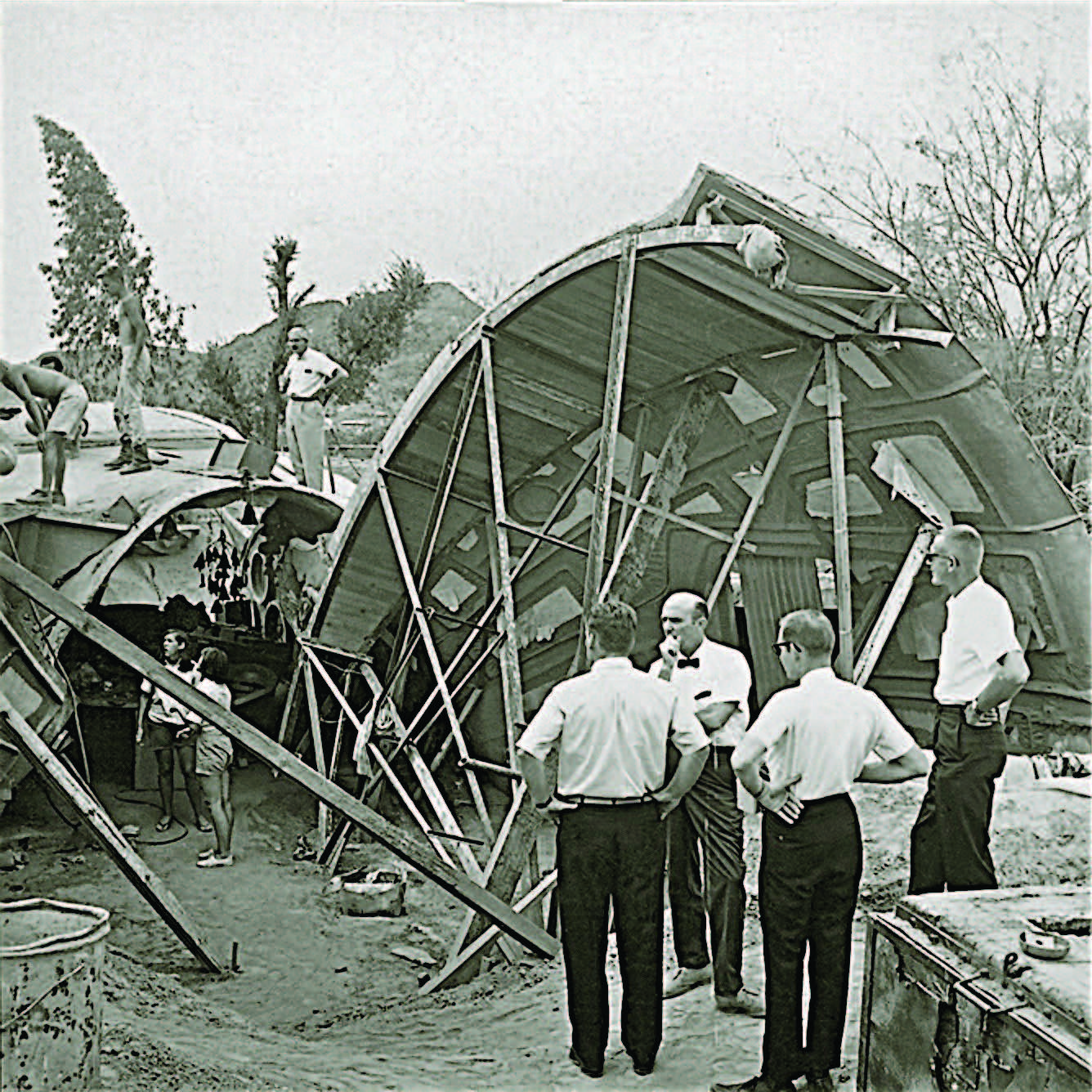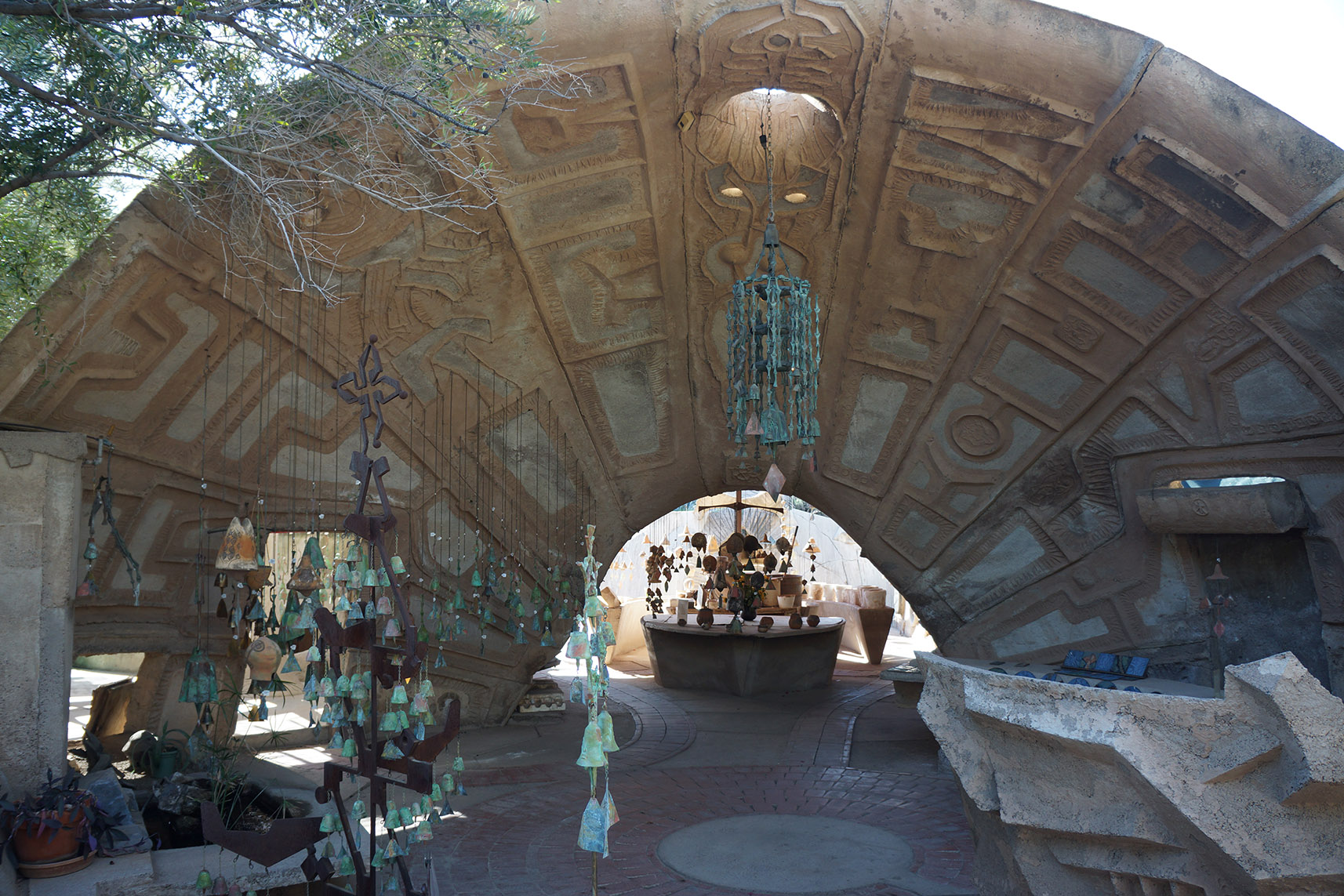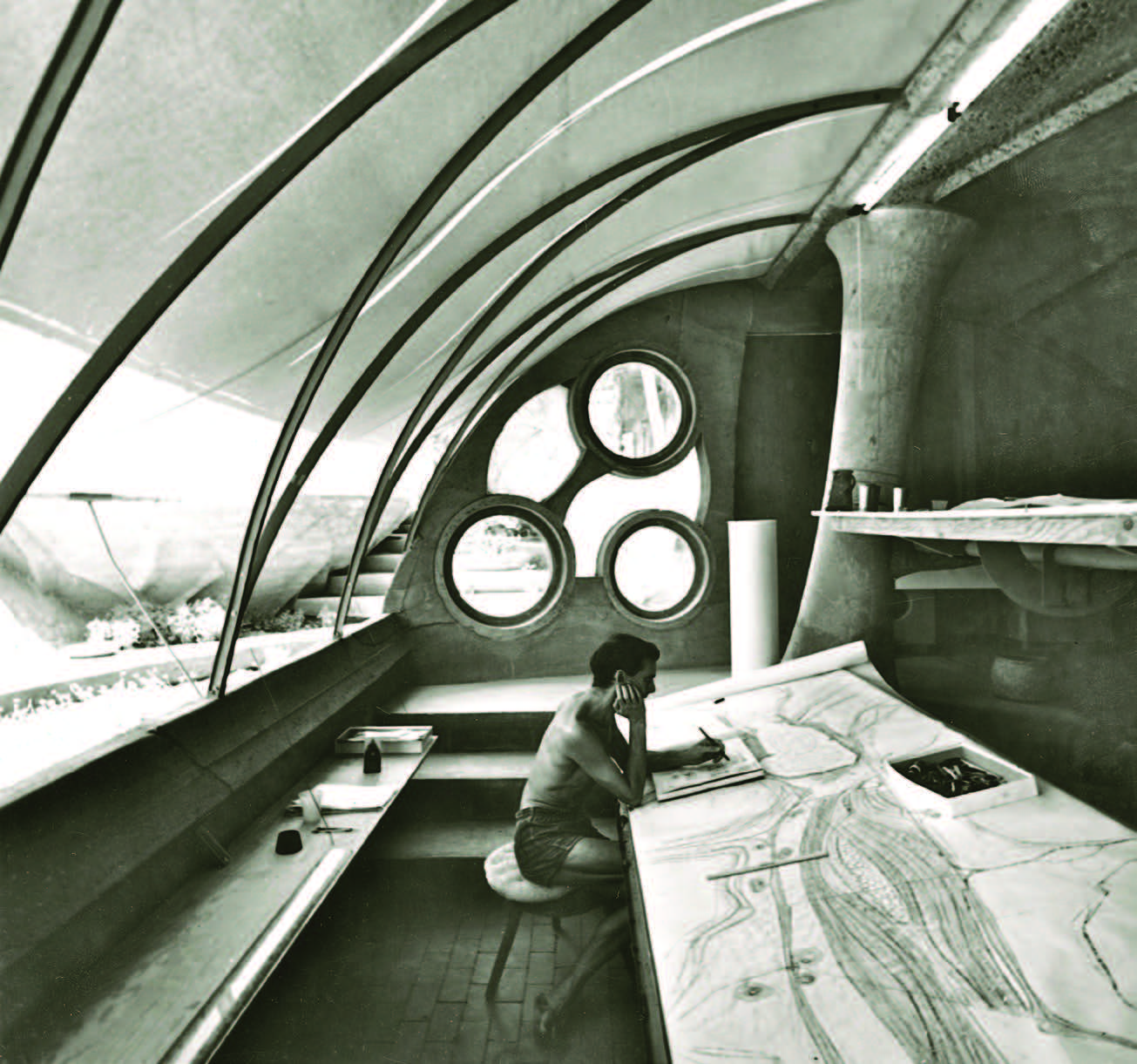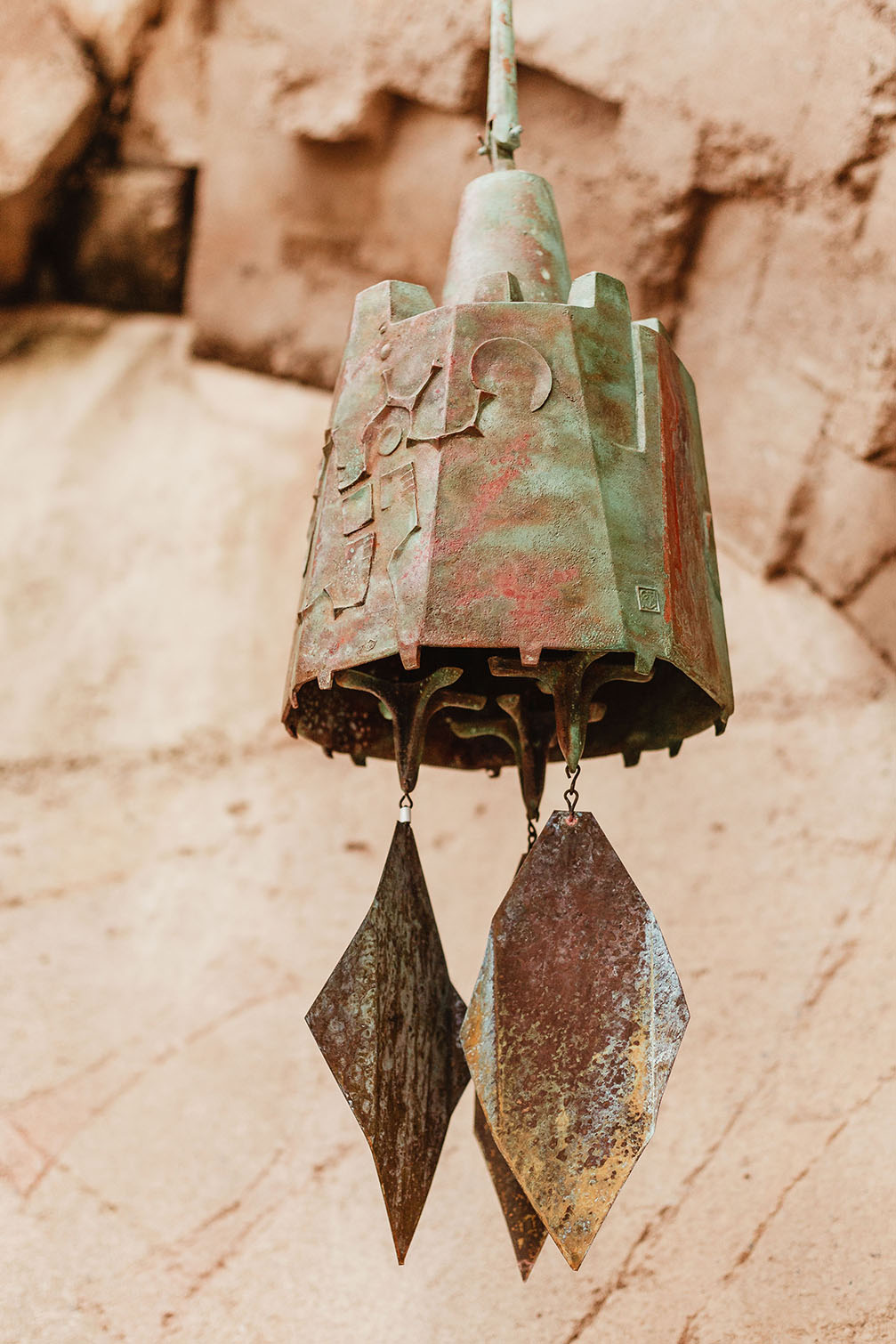Be part of the conversation: azarchitecture/Jarson & Jarson Architecture blog covers architecture and civic topics that comment on what’s happening in the Valley’s diverse design community. Here’s what’s happening now:

Our Visual Wealth: The Birth of Cosanti – Part 1
“. . . to make conditions in the future a little better than they are now . . . that’s the function of architecture.” –Paolo Soleri
Paolo Soleri will be dead eight years this April 9 –– 13 days before Earth Day 2021.
But his legacy as architect, ecological pioneer, urban philosopher, artist and craftsman remains at two of Arizona’s most architecturally significant sites: Cosanti in Paradise Valley and Arcosanti in Cordes Junction, 70 miles north of Phoenix.
Many know Soleri from the one-off bronze and ceramic Cosanti Originals windbells produced at both sites or the Soleri Bridge crossing the Arizona Canal at Camelback Road in downtown Scottsdale, but his achievement at Cosanti should be more widely celebrated and utilized, says Scott Jarson, who with wife Debbie is celebrating 31 years of azarchitecture Jarson & Jarson Real Estate, Scottsdale, which specializes in the sale and purchase of historic properties.
“Cosanti is a genuine experiment in living, combining wood, silt and concrete and ingenuity,” he explains. “For Paolo Soleri, it was a way of totally integrating life and work. Here he walked the talk for some time.”
In 1958, Jarson’s parents purchased a home a quarter mile north of Cosanti on Mockingbird Lane in what was then the Doubletree Ranch area in Maricopa County. “I used to ride by here on my bike and watched the Ceramics Studio and other structures being built,” he explains. “I spent a lot of time there.”
Cosanti significantly influenced him in his life’s work. “I remember speaking with my high school art teacher and telling him that the CatCast House at Cosanti was the kind of home I wanted to build one day for myself,” he recalls. “That would be great, I thought.”
Fortunately, a new partnership between the Cosanti Foundation and The School of Architecture, formerly at Taliesin, is offering architectural students from around the world hands-on education at Arcosanti, and in a limited capacity at Cosanti as well. In January 2021, the first students began studying and working in person at Arcosanti under this plan.
In 1932, Frank Lloyd Wright founded the school as an apprenticeship program; it is accredited by the National Architectural Accrediting Board and the Higher Learning Commission, offering a project-based Master of Architecture degree, focused on an immersive, hands-on educational experience. The school left Taliesin West in May 2020. In 1965 Soleri and his wife Colly (Carolyn Woods) established the 501(c)3 educational nonprofit foundation to further his ideals of ecological and architectural accountability.
As students live, attend classes, and design and build their traditional shelters at Arcosanti, the collaboration also envisions guests and tourists better enjoying the structures at and lessons of the earlier Cosanti.
“We see the school’s new location and leadership as an opportunity to reinvigorate our dedication to our entire community, including students, faculty, staff and alumni,” says Dan Schweiker, chair of the governing board for the school and a 20-year resident of Paradise Valley, where he served on the town council for 12 years. He now lives in Scottsdale. “Cosanti is an iconic place in Paradise Valley, and we look forward to working with the foundation for many years,” he adds.
From the mid-1950s through the mid-1970s, Soleri and a cadre of apprentices and volunteers students designed and built Cosanti. Those dozen or so visionary dwellings and structures, including the Earth House (1956), Pumpkin Apse/Barrel Vaults (1967), Soleri Studio (1959), CatCast Home (1965), Gallery (1961) and canopied Pool (1966), represent Soleri’s pioneering vision to create a habitat balancing human needs and the environment.
Designated a culturally significant site on the Arizona State Registry of Historic Places, Cosanti is also where Soleri perfected his “earth-casting” technique for building structures and procedures for casting bells, where he created his great bridge designs and where he wrote Arcology: The City in the Image of Man, which inspired him to build Arcosanti.
“Soleri’s Cosanti studios and experimental structures, while modest on their five-acre site, are architecturally as important as Frank Lloyd Wright’s Taliesin West residence and studio,” says Will Bruder, FAIA, the celebrated Valley architect who apprenticed with Soleri in the 1960s, helping build Cosanti structures such as the two-level CatCast. Jarson remembers watching Bruder, about ten years his senior, labor at his work; today he and Debbie live in a Bruder-designed home in Paradise Valley.
“With this structural variety and the complex’s poetic continuity, these varied structures appear to link together in an organic wholeness,” adds Bruder, who lives and practices in Portland, Oregon.
With the name Cosanti, Soleri blended two Italian words, “cosa” and “anti” (“before things”), to describe his belief that humanity’s direct access to nature should also connect organically with its structures. The concept is aligned with his arcology, a portmanteau of architecture and ecology: “environment in harmony with man and nature.”
“Cosanti represents the legacy of a thinker, artist, and architect combined in one location,” Jarson says. “A sculpture of buildings and a must place to go for architects as well as anyone interested in our environment, Cosanti is the work of a visionary who thought about environmentalism, sustainability, and climate change long before those concepts became mainstream.”
Brown is a Valley-based freelancer (azwriter.com). This is the fourth in an ongoing written series celebrating Arizona’s “Visual Wealth.” His article on the Cosanti, first appearing in the June/July 2021 issue of Defining Desert Living, will be released over three segments. The second and third were published here and here.
To read the Editor’s Note on Dr. Daniela Soleri, Paolo Soleri’s daughter, please use the link here




